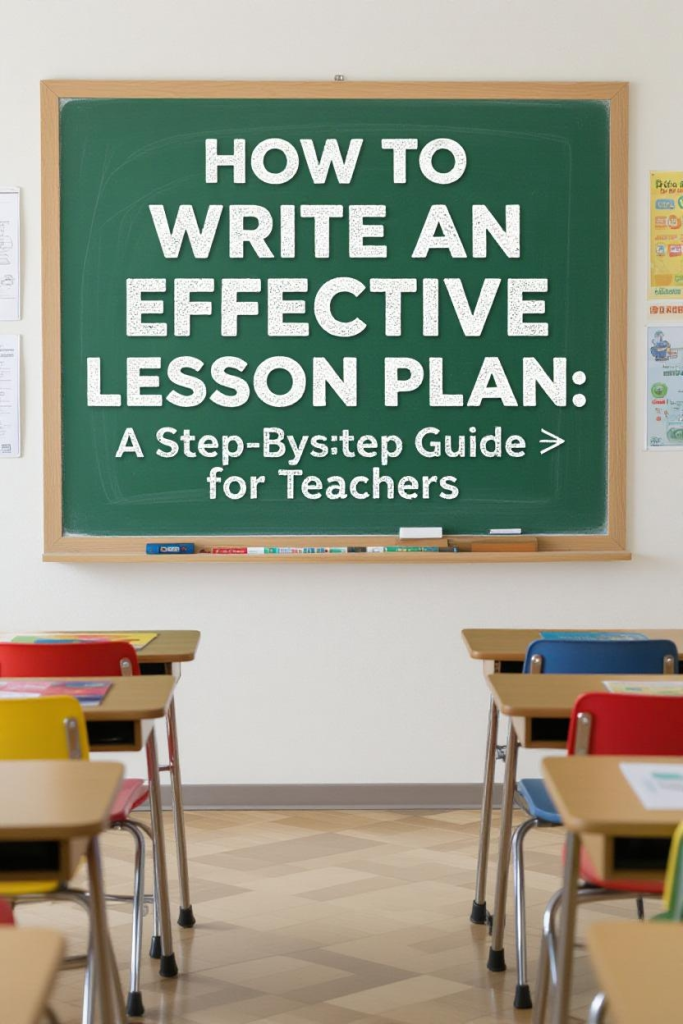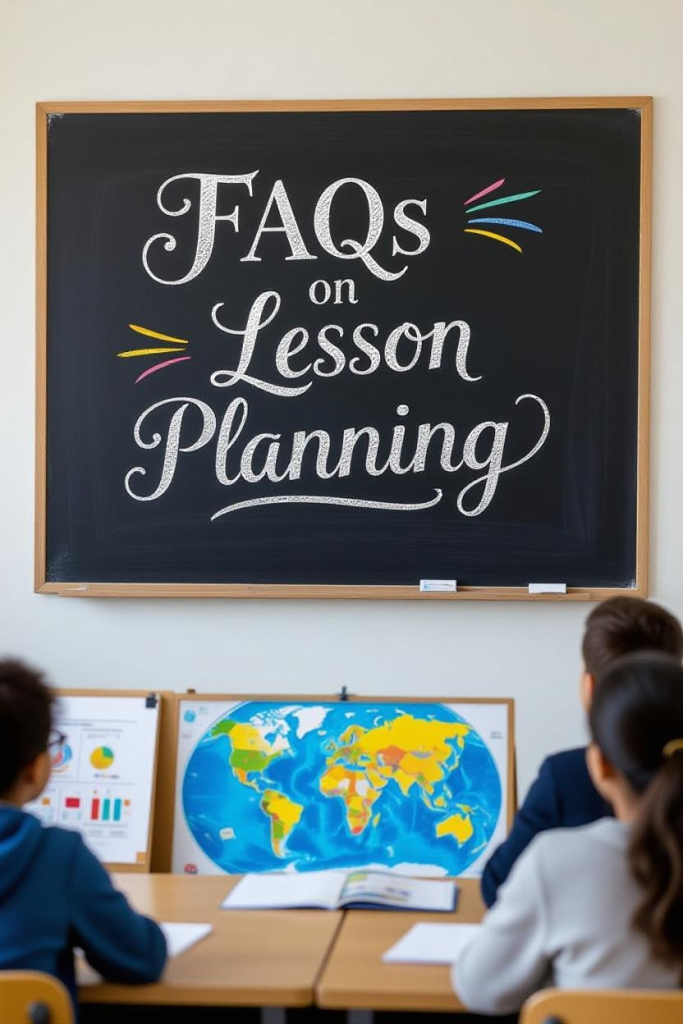
Updated October 2025
Written by Essayassists.com Education Experts
Introduction
A well-structured lesson plan is the foundation of effective teaching. It serves as a roadmap that helps educators organize learning objectives, instructional methods, and assessment strategies. Whether you are a new teacher or an experienced educator looking to refine your approach, a clear lesson plan ensures that classroom time is used efficiently and that students stay engaged.
In this blog, you’ll learn how to write a lesson plan step by step, explore its key components, and discover practical tips to make your lessons more impactful.
Why Lesson Planning Matters
Lesson planning is essential because it helps teachers stay organized, focused, and aligned with curriculum goals. A strong plan not only outlines what to teach but also how to teach it effectively. It allows educators to anticipate challenges, prepare teaching materials, and adapt lessons to students’ diverse learning needs.
Moreover, structured lesson plans promote continuity and consistency across lessons. They also provide a framework for reflection, helping teachers evaluate what worked, what didn’t, and how to improve future instruction.
Step-by-Step Guide: How to Write a Lesson Plan
Step 1: Define Learning Objectives
Start by identifying what you want students to learn by the end of the lesson. Objectives should be specific, measurable, and achievable. Use action verbs like describe, analyze, compare, or create to make your goals clear.
Example: “By the end of the lesson, students will be able to identify and explain the main causes of World War I.”
Step 2: Identify Materials and Resources
List all materials you’ll need for the lesson — such as textbooks, visual aids, technology tools, or handouts. Preparing resources ahead of time ensures smooth lesson delivery and keeps students actively engaged.
Step 3: Design the Lesson Introduction
The introduction should grab students’ attention and connect new content with their prior knowledge. You can start with a thought-provoking question, short video clip, or real-world example related to the topic.
Example: Begin a science lesson on ecosystems by showing a short video about the Amazon rainforest.
Step 4: Develop the Lesson Procedures
This section forms the core of your lesson plan. Describe how you’ll teach the content step by step. Include explanations, guided practice, and independent work. Make sure your methods encourage interaction and critical thinking.
Example: Lecture (10 mins) → Group Discussion (15 mins) → Activity (20 mins) → Review (10 mins).
Step 5: Plan for Assessment
Assessment helps you determine whether students achieved the learning objectives. Use both formative assessments (like quizzes, oral questions, or observations) and summative assessments (like essays or projects).
Example: After a reading comprehension lesson, give a short quiz or ask students to summarize the passage.
Step 6: Include a Closure or Reflection Activity
End your lesson with a brief summary or reflection. Reinforce key points and give students an opportunity to ask questions or share insights. A good closure helps learners consolidate their understanding.
Step 7: Reflect and Revise
After teaching, take a few minutes to reflect on the lesson. Ask yourself:
- Did students meet the objectives?
- What parts went well?
- What needs improvement?
Reflection helps you refine future lesson plans for better results.
Tips for Writing an Effective Lesson Plan

Writing an effective lesson plan requires a balance of structure, creativity, and adaptability. The goal is to create a teaching guide that not only meets curriculum standards but also keeps students motivated and actively engaged. Below are practical tips to help you design lesson plans that truly make an impact in the classroom.
1. Start with Clear and Measurable Objectives
Your objectives set the direction for the entire lesson. Use specific, measurable verbs from Bloom’s Taxonomy—such as identify, analyze, compare, or create—to clarify what students should achieve by the end of the class.
Example: “Students will be able to explain the process of photosynthesis and identify its main components.”
2. Align Your Lesson with Curriculum Standards
Effective lesson plans connect directly to broader learning outcomes and academic standards. Ensure that every activity, question, or assignment supports your course goals or national education benchmarks. This helps maintain consistency and accountability in teaching.
3. Keep Students at the Center of the Lesson
Design lessons that encourage active participation rather than passive listening. Include group discussions, problem-solving tasks, or interactive projects that allow students to explore and apply concepts. The more engaged students are, the deeper their understanding becomes.
4. Manage Time Wisely
Allocate specific time frames for each part of your lesson—introduction, instruction, activities, and assessment. A realistic time plan ensures smooth transitions and prevents rushing through important concepts. Always prepare a short backup activity in case some tasks end early.
5. Use a Variety of Teaching Methods
Students have different learning styles—some learn best through visuals, others through discussion or hands-on activities. Combine methods like lectures, multimedia presentations, case studies, and practical demonstrations to make your lesson more inclusive and engaging.
6. Integrate Assessment Throughout the Lesson
Assessment shouldn’t just happen at the end. Use formative assessments—like quick polls, quizzes, or oral questions—during the lesson to check understanding. This allows you to adjust your teaching in real time and support students who may be struggling.
7. Reflect and Revise Regularly
After each lesson, take a few minutes to reflect. Ask yourself:
- Were the learning objectives met?
- Did students stay engaged?
- What could be improved next time?
Reflection turns good lesson plans into great ones and helps teachers grow professionally.
8. Make It Flexible
Even the best plans may need adjustments. Be prepared to adapt your activities based on student feedback, classroom dynamics, or unexpected challenges. Flexibility ensures that your teaching remains responsive and effective.
9. Incorporate Real-World Connections
Students learn best when they see how lessons relate to real life. Use current events, everyday examples, or career-related scenarios to make your content more meaningful and memorable.
10. Keep Your Lesson Visually Organized
A clear structure makes your plan easier to follow. Use headings, bullet points, and time markers for each section. A well-organized layout helps you stay on track during class and makes your plan reusable in future semesters.
Essayassists Tip:
Remember that lesson planning is not about perfection—it’s about preparation and purpose. A well-crafted plan gives you confidence in the classroom and ensures that every minute Perfect! Here’s the next section, written in the Essayassists.com tone—professional, engaging, and SEO-optimized—to follow your previous segment:
Common Mistakes to Avoid When Lesson Planning

Even experienced educators can overlook key elements when designing lesson plans. These small errors can lead to confusion, disengagement, or missed learning outcomes. By understanding what to avoid, teachers can craft more effective and purposeful lessons that truly enhance student learning.
1. Setting Vague Learning Objectives
One of the most common mistakes is writing unclear or overly broad objectives. For instance, saying “Students will understand photosynthesis” is too general. Instead, use measurable terms such as “Students will be able to describe the steps of photosynthesis and explain its importance to plant life.” Specificity ensures that both teaching and assessment are focused.
2. Ignoring Time Management
Failing to allocate time for each activity often results in rushed explanations or unfinished lessons. A well-structured lesson includes time for instruction, practice, feedback, and reflection. Teachers should also plan for short transitions and possible delays to maintain a smooth classroom flow.
3. Overloading the Lesson with Content
Trying to teach too much in one session can overwhelm students and dilute learning outcomes. Focus on depth rather than breadth—choose the most essential concepts and explore them thoroughly through examples and activities. Remember, less is often more in effective teaching.
4. Neglecting Student Diversity
Students come from different backgrounds and have unique learning styles. A common mistake is using a “one-size-fits-all” approach. Effective lesson planning includes differentiation—offering various ways for students to access content, engage with material, and demonstrate understanding.
5. Skipping Assessment Opportunities
Some teachers leave assessment until the end of the unit. This makes it difficult to identify learning gaps early. Instead, integrate formative assessments throughout the lesson—quick checks for understanding, group discussions, or reflection prompts—to ensure students are on track.
6. Lack of Flexibility
A rigid lesson plan leaves little room for spontaneous learning opportunities or adjustments. Great teachers remain flexible—if students are deeply engaged in discussion, it’s okay to extend the activity and explore the topic further. Adaptability is key to effective teaching.
7. Overlooking Real-World Relevance
Lessons that feel disconnected from real life often fail to capture student interest. Avoid designing lessons that rely solely on theory. Instead, connect content to current events, practical examples, or career applications to help students see the “why” behind what they learn.
8. Not Reflecting After the Lesson
Many teachers move straight to the next topic without evaluating what worked or didn’t. Post-lesson reflection helps identify strengths, weaknesses, and opportunities for improvement. Keeping a brief reflection journal after each class can significantly enhance long-term teaching quality.
Essayassists Tip:
Lesson planning is an evolving process. The best educators continuously review, refine, and refresh their plans based on student performance and classroom experience. Avoiding these common pitfalls ensures your lessons stay dynamic, focused, and student-centered.
FAQs on Lesson Planning

1. What is a lesson plan and why is it important?
A lesson plan is a detailed guide that outlines what students will learn, how they will learn it, and how understanding will be measured. It helps teachers stay organized, manage time effectively, and ensure that lessons meet curriculum goals. A well-prepared lesson plan also improves classroom confidence and teaching flow.
2. What are the main components of an effective lesson plan?
An effective lesson plan typically includes:
- Learning objectives – what students should achieve by the end of the lesson.
- Materials and resources – tools or supplies needed.
- Instructional procedures – step-by-step guide for teaching the topic.
- Assessment methods – how you’ll evaluate student understanding.
- Reflection or closure – how you’ll summarize the lesson and connect it to future topics.
3. How long should a lesson plan be?
There’s no fixed length. Some teachers prefer one-page summaries, while others create detailed multi-page outlines. The key is clarity—include enough information to guide instruction without making it overly complicated.
4. What are the most common lesson planning models?
Popular models include the 5E Model (Engage, Explore, Explain, Elaborate, Evaluate), Madeline Hunter’s model, and Backward Design. Each framework helps teachers structure their lesson flow logically while focusing on student engagement and measurable outcomes.
5. How can I make my lesson plans more engaging?
To make lessons engaging, use real-life examples, interactive discussions, technology tools, or group activities. Incorporate multimedia resources like videos or infographics to keep students interested. A balance of visual, auditory, and kinesthetic methods caters to all learning styles.
6. How do I differentiate instruction in a lesson plan?
Differentiation means adjusting content, process, or assessment based on students’ learning needs. You can provide varied tasks, use flexible groupings, or offer extra support materials for struggling learners. This ensures inclusivity and maximizes learning outcomes for all students.
7. Should I write a new lesson plan for every class?
Not necessarily. You can reuse and adapt previous lesson plans, updating them to match new class levels, learning objectives, or teaching environments. Continuous refinement helps keep your lessons fresh and effective.
8. What are the biggest challenges teachers face in lesson planning?
Common challenges include time constraints, managing diverse student needs, aligning lessons with standards, and incorporating technology effectively. However, consistent reflection and collaboration with colleagues can make lesson planning easier and more efficient.
9. How do I assess whether my lesson plan was successful?
You can measure success by observing student engagement, reviewing assessment results, and gathering student feedback. If students meet your objectives and actively participate, your lesson plan is working. Post-lesson reflection also helps identify areas for improvement.
10. What are some tools that can help with lesson planning?
There are several online tools such as Google Classroom, Planbook, and Nearpod that help teachers organize and share lesson plans efficiently. Templates from Essayassists.com can also provide a clear structure and examples for new educators.
Essayassists Tip:
Lesson planning isn’t just about organization—it’s about intention. Each lesson should have a clear purpose, connect to broader goals, and engage students meaningfully. A well-thought-out plan transforms teaching into an art that inspires learning every day.
Final Thoughts on Lesson Planning
Creating an effective lesson plan is one of the most essential skills every educator must master. It’s not just a checklist or a schedule—it’s a roadmap for meaningful learning. A well-crafted lesson plan helps teachers stay organized, manage time efficiently, and align classroom activities with learning objectives. More importantly, it ensures that every student receives a structured and engaging educational experience.
Lesson planning also promotes confidence and adaptability in the classroom. When you know your goals, materials, and methods in advance, you can focus more on student engagement and less on improvisation. Even when unexpected challenges arise, a strong plan provides the flexibility and structure needed to stay on track.
In today’s fast-paced educational environment, lesson planning also supports innovation. By integrating technology, real-world applications, and interactive learning strategies, teachers can transform traditional classrooms into dynamic spaces of discovery and collaboration.
Ultimately, lesson planning is about intentional teaching—knowing what you want students to learn and how to help them achieve it. Whether you’re a new educator or an experienced teacher refining your craft, remember this: thoughtful preparation leads to powerful instruction, and great lessons start with great plans.
Essayassists Tip:
Successful teachers don’t just follow lesson plans—they build them thoughtfully, adapt them creatively, and reflect on them constantly. With careful preparation and reflection, every lesson becomes an opportunity to inspire learning and spark curiosity.
